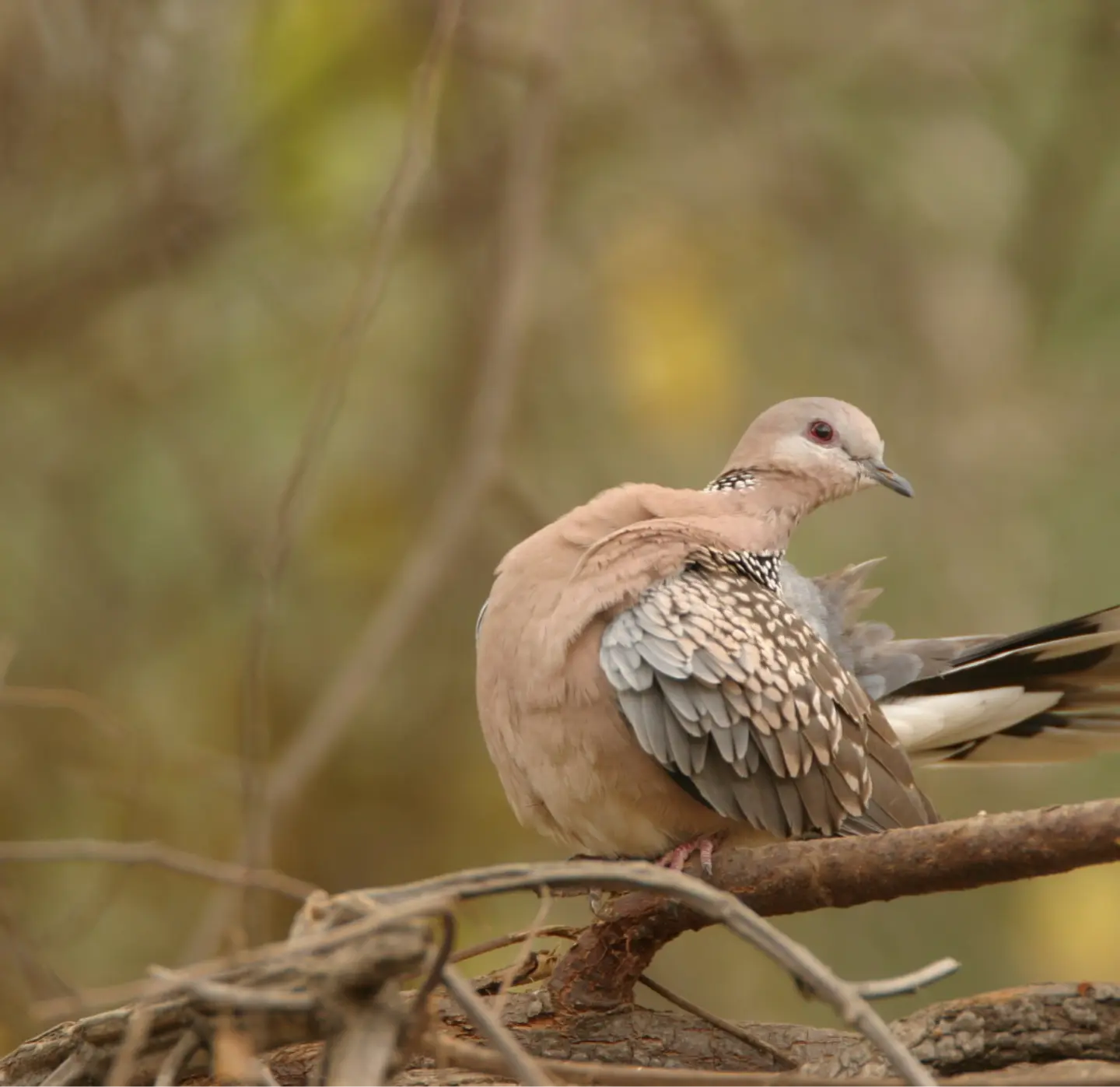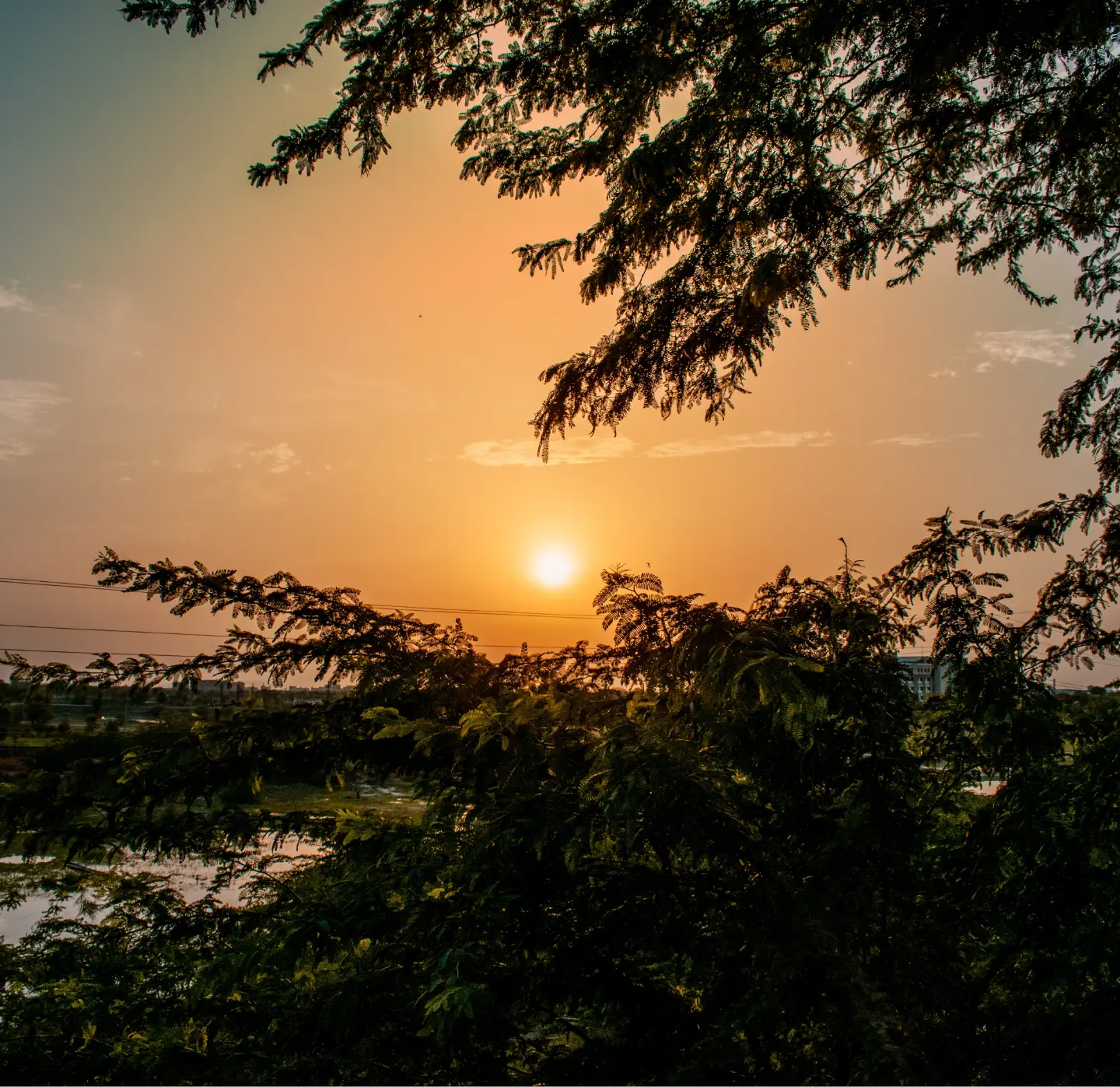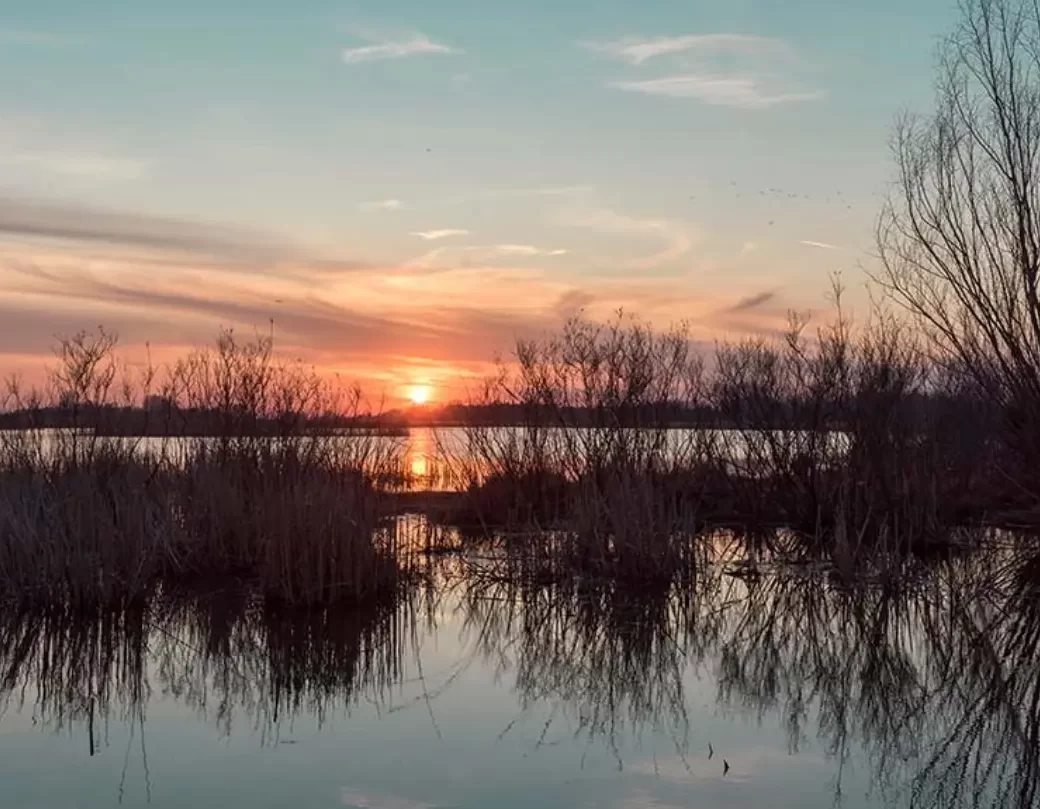Experience it all

An early morning safari or an afternoon one at the National park is an experience to behold.

The Jungle Safari
Our experienced naturalists will help you explore the abundant wildlife that the Ranthambore National Park, sprawled over an estimated area of 400 sq. kms, has to offer. Besides the magnificent Bengal Tiger, it is a host to over 200 species of birds, both resident and migratory, leopards, jungle cats, striped hyenas, a variety of antelopes & deer, and other mammals.
When planning a safari in India, you may have certain expectations based on your prior experiences on African safaris. In that case, you won’t believe how different Indian safaris are from their African counterparts. The Tiger which is the mainstay of Safaris in India is an elusive animal compared to its African brethren. Besides, the terrain and the undergrowth in Indian Jungles are far heavier than in Africa, so it is exceedingly tough to spot the gorgeous Tiger in its home. But with skilled drivers and guides, this close-to-impossible scenario of monitoring Tigers is made uncomplicated. Guests on a safari in Kanha ride in an open Jeep that can accommodate up to five people. This is a 4WD Maruti Suzuki, also known as a Maruti Gypsy. With its rugged construction and whisper-quiet engine, this vehicle is perfect for exploring India’s national parks in search of exotic wildlife.
When you go on a safari, you’ll always have a licensed driver and a trained forest guide with you. A forest guide that goes along with you to make sure you know all the rules and regulations of the park. The driver and the forest guide will typically make every effort to locate the majestic King of the Jungle, using techniques such as following the Tiger’s footprints, listening to the alarm calls of the park’s various denizens when the Tiger is spotted, and communicating with other drivers and guides in other vehicles when they cross paths. It’s incredible that the drivers and guides can keep tabs on the tiger’s whereabouts without the ubiquitous wifi equipment of African safaris.

Time & Zones
An early morning safari (06:30 AM to 9:45 AM) and an afternoon safari (02:15 PM to 05:30 PM), between 1st October to 30th June every year. This three to three and half hour safari takes you through a journey that will be remembered for a lifetime.
Within 10 different zones for tourists inside the park, the vehicles go anywhere on the network of tracks that exists in the zone. A maximum of 8 vehicles take visitors across each zone at any point in time.
Additional information:
• All permits are issued by the National Park of Ranthambore, they have the right to accept or reject applications for full-day/half-day safaris.
• A limited number of full-day/half-day permits (5 per day) are issued for each day, one has to apply
well in advance to ensure entry.
• The park management randomly appoints vehicles, drivers, and naturalists for the safari. Visitors can
choose either of them for an additional cost.
• These special safaris are far more flexible and productive, improving the quality of the safari
experience.
• To get these full-day and half-day Safari rates and additional information, please drop us an
email at: regency@ranthambhor.com
Safari Rates, arranged by Hotel Ranthambore Regency
Vehicle
Jeep (max 6 people)
Canter (max 20 people)
Indian Nationals
INR.2000 per passenger
INR 1200 per passenger
Foreigners
INR 3500 per passenger
INR 2400 per passenger
Taxes Extra
GST – 5% TAX
GST – 5% TAX
Ranthambore Park Timings
Dates
01st to 31st October
01st November to 31st January
01st February to 01st March
01st April to 15th May
Morning
06:30 am – 10:00 am
07:00 am – 10:00 am
06:30 am – 10:00 am
06:00 am – 09:30 am
Evening
02:30 pm – 06:00 pm
02:00 pm – 05:30 pm
02:30 pm – 06:00 pm
03:00 pm – 06:30 pm
Additional rules and regulations of the Government of Rajasthan:
• The Government of Rajasthan reserves the right of admission to the National Park
• The park may be closed without prior notice to visitors
• Once the booking is confirmed, no refund/cancellation is permissible
• Bookings are non-transferable
• Seats reserved cannot be exchanged with or resold to other visitors
• Providing ID proof is essential to enter the Park
• Subsequent changes in entrance fees or government taxes will be extra and will have to be borne by the Guest
or Travel Agent
• There is no charge for still cameras
• PCam, DCAm and VCam charges are to be paid as per current rules laid down by Tourism/Forest Department
policies
• Any changes in policies by the Ranthambore Park authorities will be intimated to visitors and will apply to all
future bookings
Gallery
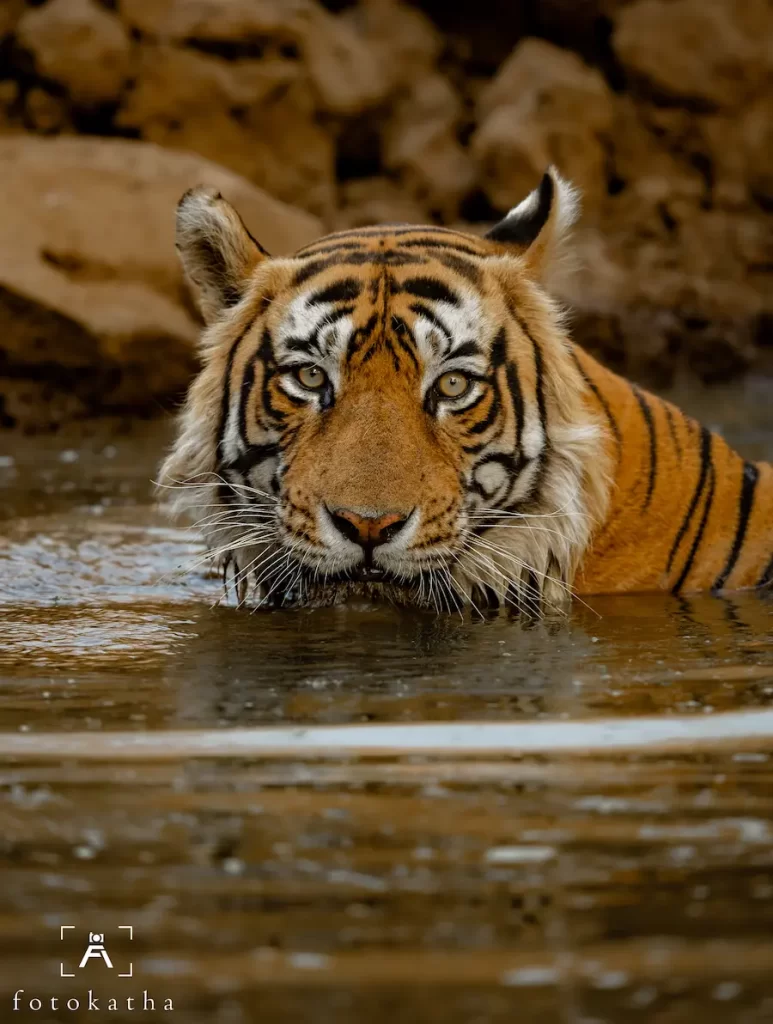
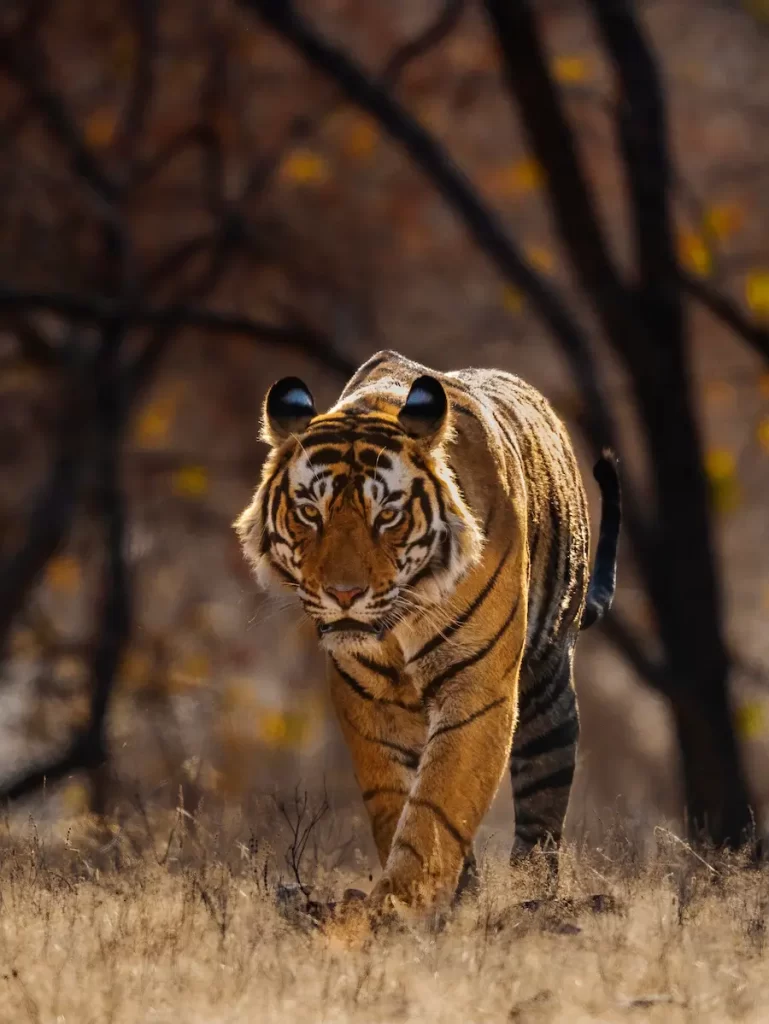
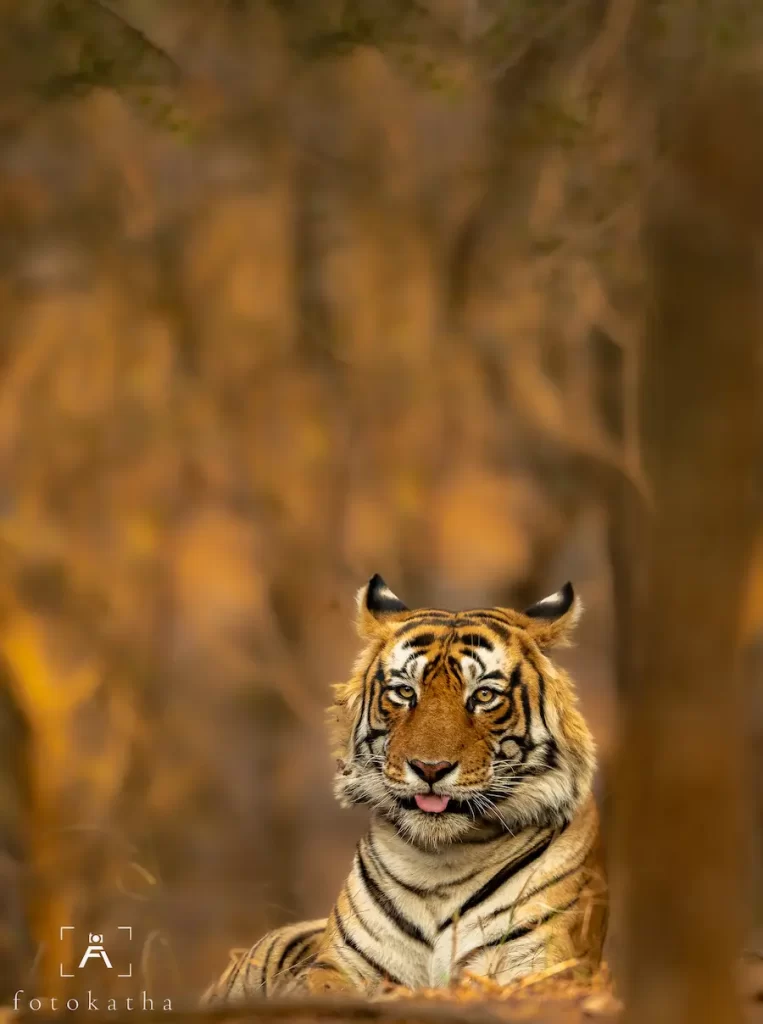
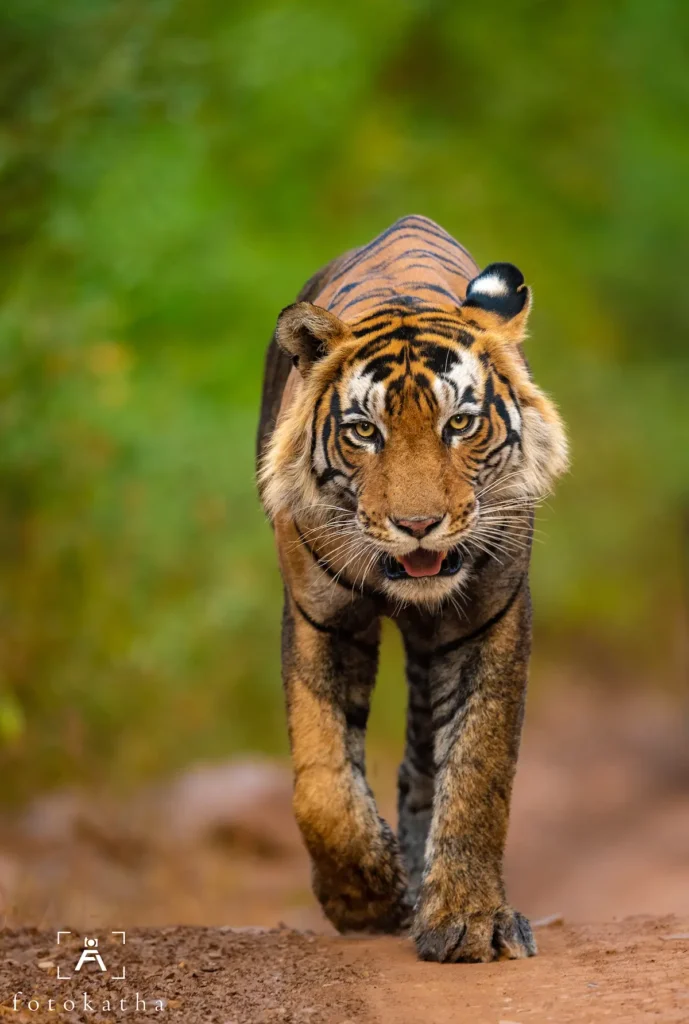
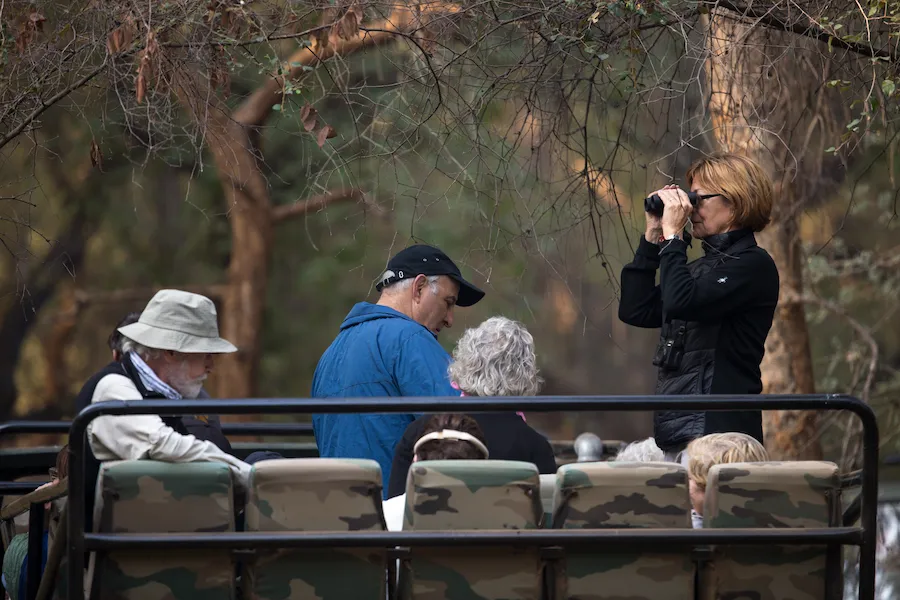
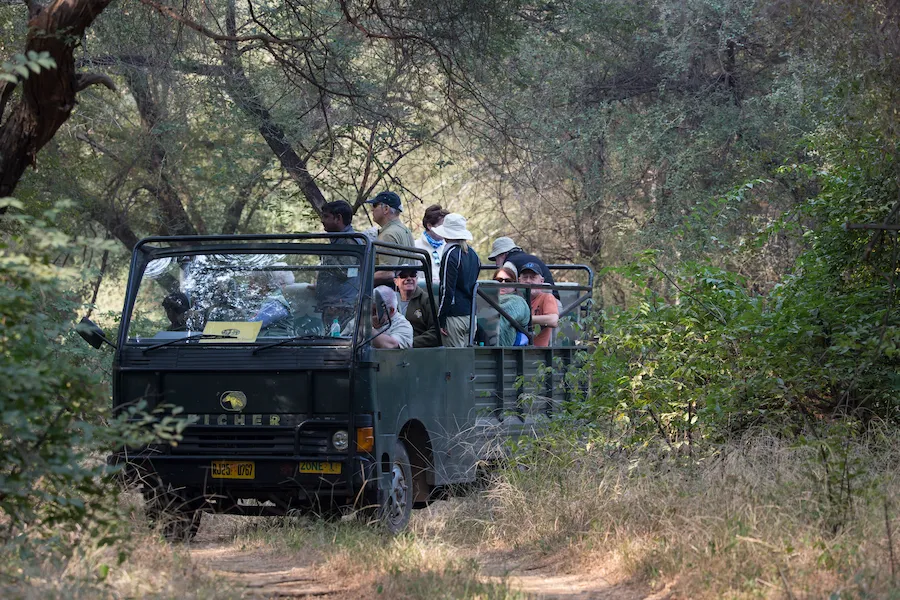

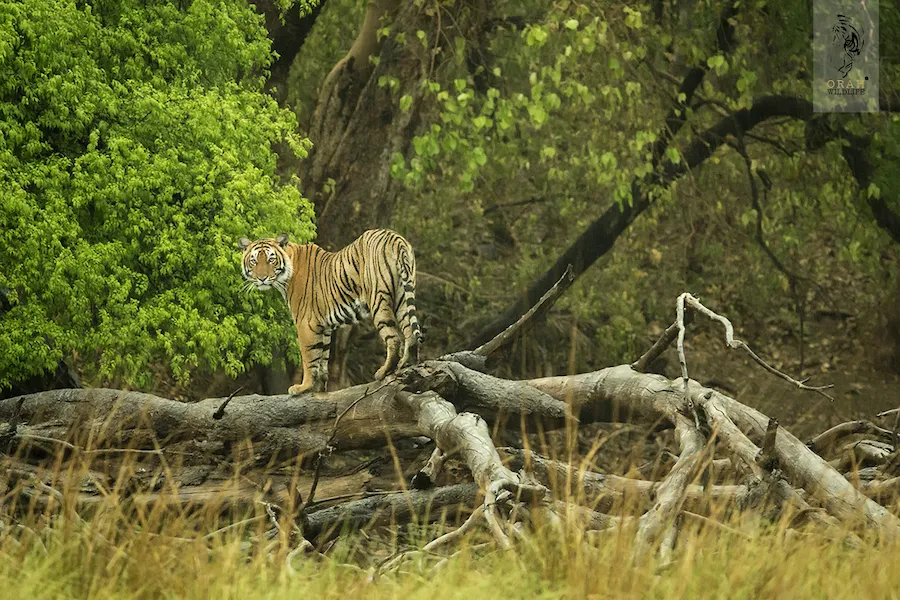

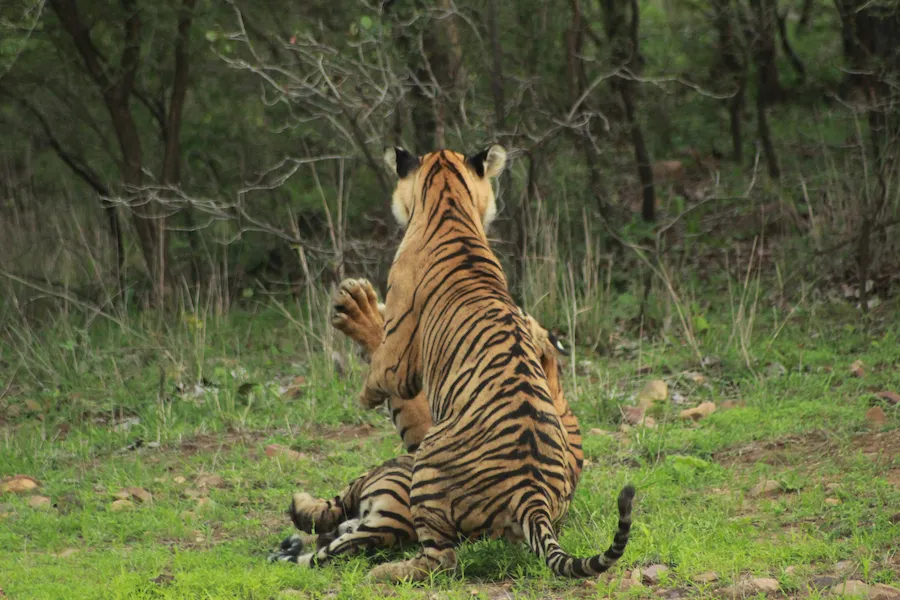

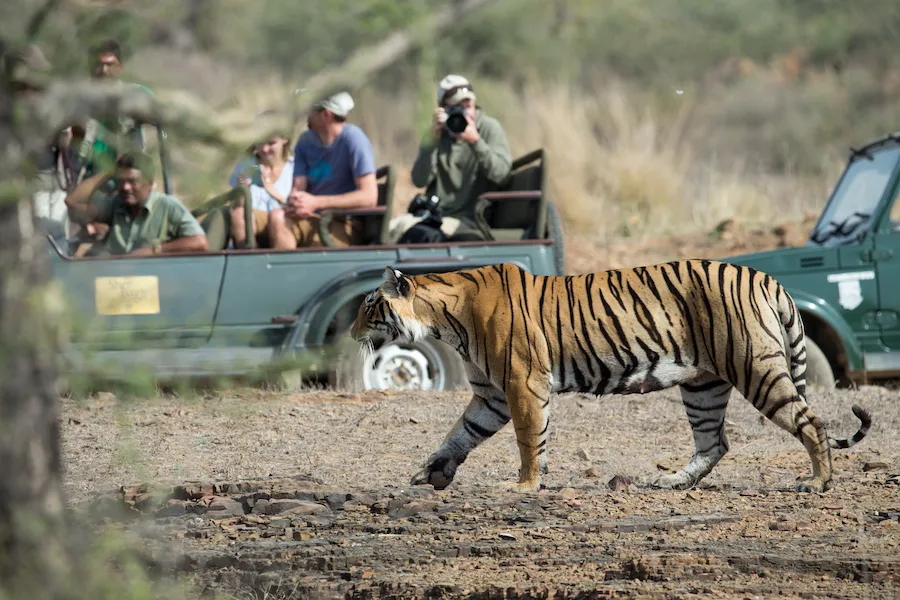
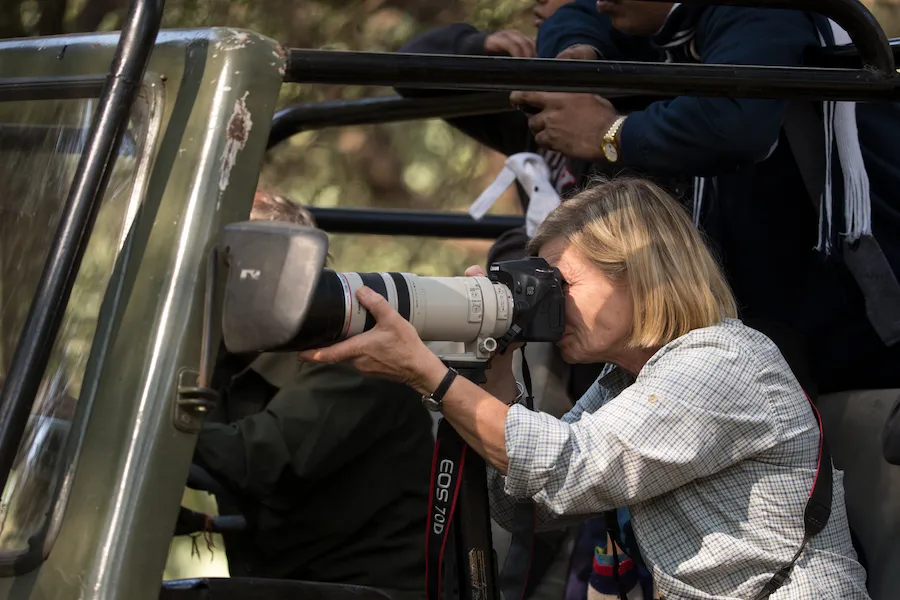
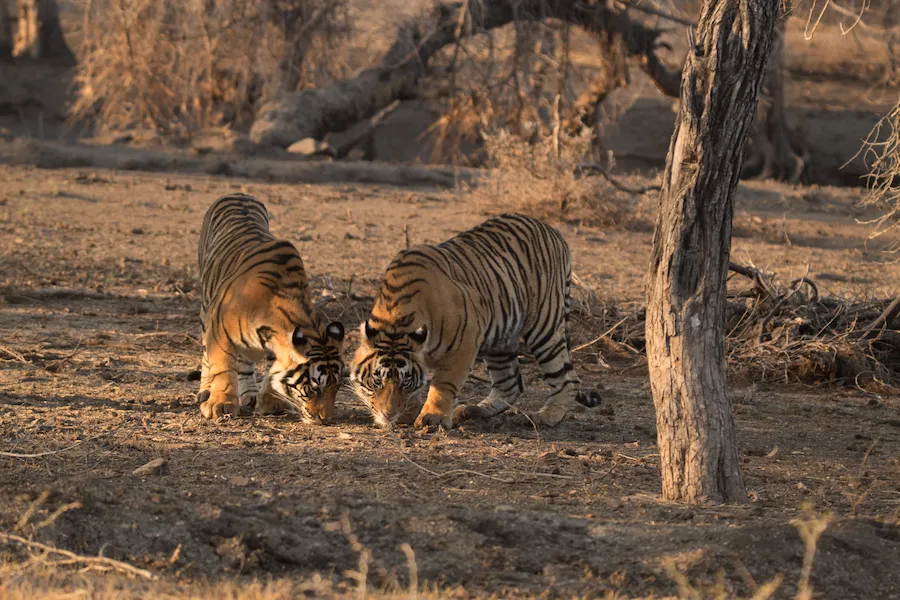
Frequently Asked Questions
When is Ranthambore National Park open for visitors?
Zones 1 to 5 of Ranthambore National Park are open from the 1st of October to the 30th of June each year, and are closed during the months of July, August, and September. Zones 6 to 10 of Ranthambhore National Park are always open.
How many zones does Ranthambore National Park contain?
Ranthambore National Park consists of ten zones. Zones 1 to 5 are regarded as the “core” of the park; zones 6 to 10 were added as the park expanded.
Which zone of Ranthambore National Park is the most desirable?
It is tough to identify a single region as the best. In all ten zones, wildlife thrives and sightings are frequent.
Can I select my zone?
No. The Department of Forest will allocate you a zone between 1 to 10 on the day of the event. If you wish to have access to a particular zone, we recommend booking our unique half-day or full-day safari, which grants free entry to all zones.
What wildlife can I witness in Ranthambore National Park?
Ranthambore National Park is renowned for having Bengal tigers. There are also leopards, sloth bears, crocodiles, sambar deer, spotted deer, jackals, hyenas, rusty spotted cats, desert foxes, hyenas, chital, nilgai, langurs, black buck, wild boar, chinkara (also known as gazelle), flying foxes, mongooses, monitor lizards, cobra Please contact us if you would want to learn more about the presence of a certain animal in Ranthambore National Park.
How can I book a Ranthambore safari?
To reserve a safari in Ranthambore National Park, please contact us through the Booking Request forms on our website (https://ranthamboreregency.com/the-jungle-safari/) or via email (regency@ranthambhor.com). Please provide as much detail as possible about your travel plans in your message. Include the number of persons travelling with you, if any; the date and time you wish to book your safari, e.g. October 1, morning and afternoon; and the type of vehicle you wish to reserve, e.g. private Jeep, shared Jeep, or shared Canter. To secure your safari reservation, we will request a deposit and a copy of the photo page of each participant’s passport as soon as we have confirmed availability. This is because the Forest Department requires a deposit and a copy of your identification at the time of booking.
How is the payment made?
We will email you the payment details once you decide to book with us.
Why is my passport required at the time of booking?
The Forest Department needs this information to book your tickets. You must provide us with a copy of the passport you intend to travel to Ranthambore with (it cannot be expired or due for renewal before your visit), and you may be requested to provide the original at the park’s entrance. The Forest Department implemented this guideline to avoid ticket scalping.
Can I pay in cash directly?
No, the Forest Department requires a full upfront payment at the time of booking. We do not take on-site payments.
Do I need to carry my confirmation of reservation?
No. The booking confirmation you will receive from us after reserving your Ranthambore safari is exclusively for your records. You are not required to bring it to Ranthambore or present it upon arrival. Regarding your real safari tickets, we will acquire them in advance and hand them directly to your guide.
How will I be notified of my safari’s pick-up time?
When you arrive in Ranthambore, a member of our staff will discuss when you will be picked up for your safari. Please let us know if you’d prefer a telephone call rather than an in-person greeting. Please note that we are unable to confirm your Ranthambore safari times until the day before.
What are the schedules for safaris in Ranthambore?
Each day, there are two safari slots: one in the morning and one in the afternoon. A half-day safari (six hours, from sunrise to noon or noon to sunset) and a full-day safari are also available (sunrise to sunset). Due to the warmer summer evenings and darker winter evenings, the hours for the standard three-hour safaris vary slightly throughout the year. When you arrive in Ranthambore, a representative of Ranthambore Tiger Tours will briefly meet you at your hotel to explain the precise timing of your Ranthambore safari. Nonetheless, in terms of a general outline, they are roughly:
Morning Safari
– 01 Oct – 31 Oct: 06:30 – 10:00 (6:30 am – 10 am)
– 01 Nov – 31 Jan: 07:00 – 10:30 (7:30 am – 10:30 am)
– 01 Feb – 31 Mar: 06:30 – 10:00 (6:30 am – 10 am)
– 01 Apr – 15 May: 06:00 – 09:30 (6 am – 9:30 am)
– 16 May – 30 Jun: 06:00 – 09:30 (6 am – 9:30 am)
Afternoon Safari
– 01 Oct – 31 Oct: 14:30 – 18:00 (2:30 pm – 6 pm)
– 01 Nov – 31 Jan: 14:00 – 17:30 (2 pm – 5:30 pm)
– 01 Feb – 31 Mar: 14:30 – 18:00 (2:30 pm – 6 pm)
– 01 Apr – 15 May: 15:00 – 18:30 (3 pm – 6:30 pm)
– 16 May – 30 Jun: 15:30 – 19:00 (3:30 pm – 7 pm)
What is the number of tigers in Ranthambore National Park?
According to the 2014 tiger census, Ranthambore National Park was home to 62 tigers. The number of tigers increased from 25 in 2005 to 48 in 2013. The park plans to relocate a few tigers to neighbouring parks, such as Sariska and others, as the tiger population continues to grow.
Is Ranthambore National Park COVID-19 safe?
Ranthambore National Park and Ranthambhore Regency have implemented a number of precautions to ensure the safety of our guests and avoid the spread of Covid-19. All our cars are meticulously cleaned before and after each expedition. We supply hand sanitizer with alcohol for your convenience. Currently, all tourists are expected to wear a face covering while on safari, and Ranthambore Tiger Tours will offer face coverings upon request.
Ranthambore National Park encourages social separation but does not enforce it. If you choose a shared Jeep, you will have less personal space than is suggested. Therefore, Ranthambore Tiger Tours strongly recommends that you rent a private car, though the choice is yours.
Are children permitted to enter Ranthambore National Park?
Under normal circumstances, Ranthambore National Park welcomes children of all ages. Ranthambore National Park does not allow minors under the age of 10 during Covid-19.
Is it safe to visit Ranthambore National Park?
Yes. The animals are accustomed to safari-goers and automobiles. They are not threatened or affected in any way by automobiles and tourists, so long as you always remain in your vehicle. In the reserve, disembarking the vehicle is prohibited. In addition, the government imposes restrictions on how close your driver may approach tigers and other creatures.
What attire should I wear during safari in Ranthambore National Park?
Ranthambore National Park has no specific dress code or colour restrictions. Consequently, we recommend neutral, khaki-like colours for blending in with your surroundings. As the park is extremely dusty, we recommend wearing clothes that are meant for outdoors and that you do not intend to wear again without washing. As with many places of interest in Rajasthan, modest attire is recommended.
What should I bring on my Ranthambore safari?
The only required item for your Ranthambore safari is a copy of your passport or the identity used to purchase the ticket. The passport number listed on your admission ticket may be compared to the original by park personnel upon entry. Other than this, you are not required to bring anything special on safari in Ranthambore, although the following items are recommended:
– Your camera
– Water bottles or alternative beverages
– Sunscreen, a brimmed hat, and sunglasses
– Binoculars if you have them; if not, your naturalist will carry a pair. Warm clothing if coming during December, January, or February.
– A facial covering for visiting during Covid-19 outbreaks.
– A hand sanitizer containing alcohol will be offered onboard, but you are welcome to bring your own.
How is the weather in Ranthambore?
Depending on the season, the climate of Ranthambore National Park varies substantially. Overnight temperatures in December and January can fall below 10 degrees Celsius (50 degrees Fahrenheit). The daytime high temperature can reach up to 25°C (77°F). Keeping this in mind, visitors to Ranthambore National Park in the winter should dress warmly in layers that may be quickly removed or added as needed.
The summer months of April, May, and June are the warmest months to visit Ranthambore National Park. Temperatures reach beyond 40°C (104°F) during the day and drop to approximately 25°C (77°F) at night. Some may find the heat uncomfortable, but for others this is the perfect time of year to visit Ranthambore. Due to the fact that the summer heat dries up the majority of watering holes, we can readily forecast where the tigers will be hanging out, with the exception of the few surviving water sources. Professional wildlife photographers who wish to maximise their chances of spotting a large cat favour the summer months.
July, August, and September are the months of the monsoon season. The likelihood of a sighting is at its lowest, and tourists should anticipate sudden, intense rainfall. Temperatures range from approximately 25°C to 35°C (77°F to 96°F), and the air is humid.
Temperature-wise, the months between (October, November, February, and March) are the most comfortable months to visit Ranthambore. The temperature reaches early 30s (90°F) during the day and descends to around 20 (68°F) at night.
Aside from the monsoon season (July, August, and September), Ranthambore experiences scant precipitation. Winter (December and January) visitors may encounter fog in the early mornings, but otherwise Ranthambore enjoys bright, clear, and dry skies.
What season is ideal for visiting Ranthambore National Park?
The best time of year to visit Ranthambore National Park depends on your personal preferences and needs. If you want to experience the most agreeable weather, October, November, February, or March are the best months. The summer months of April, May, and June are more fruitful in terms of sightings, but most people find them unbearably hot.
Between October and June is typically the best time to explore Ranthambore National Park.
The park’s outermost zones (6–10) remain accessible during the monsoon months of July, August, and September. It is a beautiful time of year to observe the forest thriving with vegetation, but the likelihood of spotting a tiger is lower than during drier seasons.


